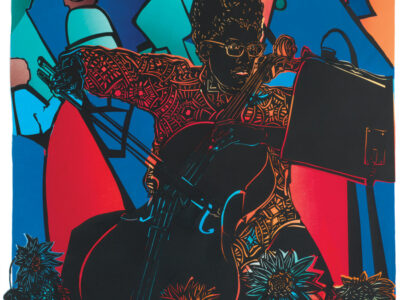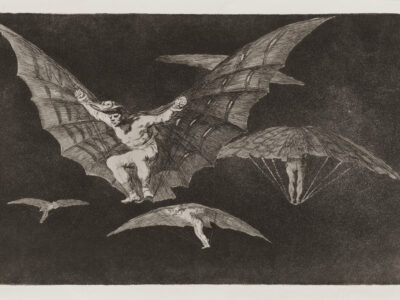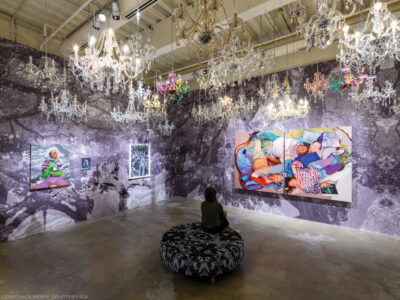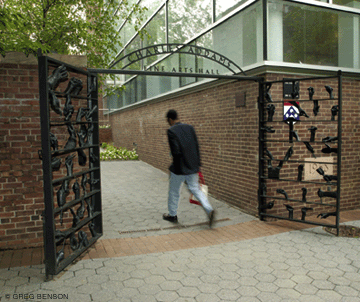
In a first-ever gathering, alumni and volunteer leaders of Penn’s artistic and cultural institutions gathered to explore common ground and sample each other’s wares.
By John Prendergast
In a sense, Arts Day at Penn was a case of preaching to the choir. Then again, part of the purpose was to get everyone to sing along.
“Communication, coordination, and collaboration,” said Katherine Sachs CW’69, chair of the Institute of Contemporary Art’s board of overseers, setting out the goals for the first-ever gathering of volunteer leaders of the University’s artistic and cultural organizations. Held on May 8, the event, cosponsored by the Provost’s Council on Arts and Culture and the Office of the Secretary, brought together board members and other representatives from 11 institutions for a very full day of mutual education, discussion, gallery-hopping, and performance-attending, all designed to increase the awareness of each others’ efforts and to encourage synergy among them.
Penn’s current strategic plan, “Building on Excellence,” has as one of its academic priorities “build[ing] an infrastructure that supports innovative, interdisciplinary cultural programs and curricular development” to capitalize on “under-utilized” resources on campus and in Philadelphia. The aim is to “make Penn as great as the sum of its great parts” in artistic and cultural offerings, said Deputy Provost Peter Conn, the Andrea Mitchell Professor of English, who chairs the arts and culture council and acted as master of ceremonies for the Arts Day events.
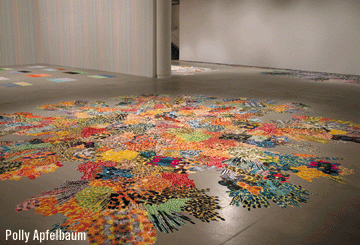
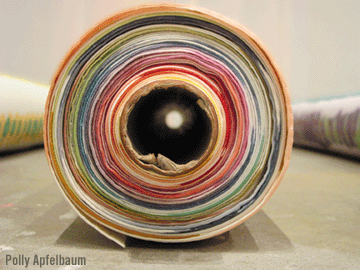
Following morning meetings of the individual organizations, the group gathered at the ICA to view an exhibition of works by Polly Apfelbaum and, over lunch, to hear capsule descriptions of the participating institutions, from the Annenberg Center for the Performing Arts to radio station WXPN. Then, toting umbrellas against the rain that fell off and on all day, they crossed Walnut Street to gather outside Charles Addams Hall for the dedication of the Kelly Family Gates, designed by fine-arts faculty member Mark Lueders MFA’93, which President Judith Rodin CW’66 called the “crowning touch” in the building’s transformation from stodgy faculty club to stylish home of undergraduate fine arts at Penn. The group also took in two photography exhibitions, South Southeast, by Magnum photographer Steve McCurry, at the Arthur Ross Gallery and Touching the Mekong: A Southeast Asian Sojourn, by Dr. Andrea Baldeck M’79 GM’84, at the University Museum’s Merle-Smith Gallery.

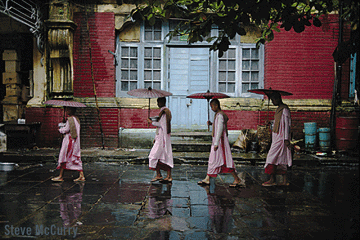
It was the opening reception for Baldeck’s show, and she was present both for that reason and as a member of the Museum’s board of overseers. A physician as well as the author of several books of photography, she recalled how, as a medical resident at Penn, she would cross the street from HUP to find respite in the Museum’s exhibits. She described the Museum as “a point of departure and arrival for all with curiosity about other worlds and cultures” and expressed the hope that her photos would “lead to new points of departure and arrival” for today’s visitors.
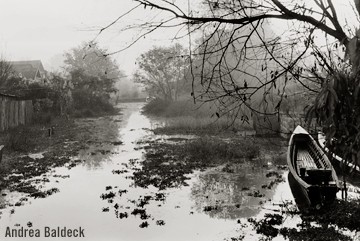
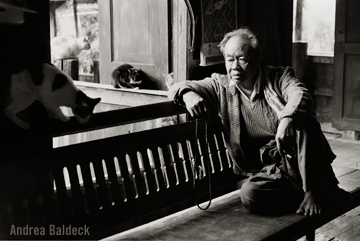
The Museum’s Rainey Auditorium was the venue for a two-hour plenary session, in which Conn detailed how the University’s artistic and cultural organizations fit into Penn’s other academic priorities and also highlighted some existing collaborative efforts. For example, the University Museum and the ICA collaborated on the exhibition, Pictures, Patents, Monkeys and More … On Collecting, this past fall, and Kelly Writers House and the Arthur Ross Gallery joined forces in 1999 on Shouts From the Wall, a show of Spanish Civil War posters and associated events.
The session also featured a spirited general discussion of the role of and support for arts and culture at Penn—so spirited, in fact, that a planned panel discussion did not manage to get started before the audience had to decamp for a reception at the president’s house followed by a performance by the Nederlands Dans Theater II at the Annenberg Center, which concluded the day’s aesthetic marathon.
Only time (and future membership lists) will tell if the Arts Day participants will take up the “challenge” offered by one of their number—John Hover C’65 WG’67, chair of the Museum’s board of overseers, who proposed that they all pledge to join each other’s groups. If not, at least they’ll know what they’re missing. On these pages, we offer some samples for readers as well.


